The Android 5.0 Lollipop Review
by Brandon Chester on December 1, 2014 10:00 AM EST- Posted in
- Smartphones
- Android
- Tablets
- Android 5.0
Google Fit
Google Fit was launched at Google IO, as an answer to other health systems put forth by Apple, Samsung, and other companies. Much like Healthkit and the Health app on iOS, Google Fit is a set of APIs and services which is accompanied by the Fit application on your Android device. With Lollipop on the Nexus 6, Google has included Fit by default as an application that cannot be uninstalled, which may be to the annoyance of users who don't really care for fitness applications.
That being said, there are obviously quite a number of users who do use fitness applications, as the list of fitness applications and initiatives from both first and third party developers is growing rapidly. The distinction between health and fitness applications should probably be made here, as while Apple's Health app can track and store things like medical information, applications like Fit are limited to tracking exercise. As you can see above, the application is organized as a list of dates, with information about your fitness activity on each day. You can specify a goal for the amount of time you want to spend exercising, and the application will send you a notification when you reach it. The tracking is done by monitoring the various sensors in your device, and you can also input information manually if you prefer to exercise without your phone. I'm not really big on exercise, but during my time using the app it seemed to work reasonably well. I did notice it can sometimes categorize time spent in a vehicle moving slowly as time biking, but that's really just a limitation of how the information is being tracked.
Updated Applications
Contacts
The People application has become Contacts in Android Lollipop, and the design is greatly improved from what was quite frankly an awfully designed interface. As you can see above, Google has given the interface a blue accent color and adopted the circular contact photo style that we've seen on other platforms. They've also cleaned up the interface significantly by consolidating the controls into the top part of the application, and by removing unnecessary parts of the interface like the lines that separated the contacts into sections based on their initials. These changes also improve usability significantly because the simplified interface is now made up of only two sections which are clearly labelled by their name, rather than by 3 icons that do not make it obvious what each section contains.
Calculator
The calculator application also receives a complete visual overhaul in Lollipop. Much like the keyboard, Google has done away with the separate visual keys for each button in the calculator, allowing them to simply float atop a solid colored background. This also allows them to not be constrained by the rules of a virtual grid, which has made it possible to move the delete key downward in the row with the basic math operators. This change means that there's no longer an empty rectangle above the keypad in portrait mode, and more space to enter numbers and operators in landscape. You can also see above how the edge of the overlay with trigonometric, exponential. and logarithmic operators is visible on the right side of the main part of the application, which lets the user know that there is something to the right that they can pull on.
Google has also greatly improved the landscape view. In the previous version, switching to landscape simply put two buttons for parentheses alongside the numerical keys, with the more advanced operators still in a section that you would have to swipe to. This layout didn't do a very good job of taking advantage of all the horizontal space available in landscape mode. With the calculator in Lollipop, the landscape view shows every button in the calculator on a single screen, separated into three separate colored sections. This is a good improvement, although I think it would be helpful if Google implemented some more features, like dedicated keys for the cubic and cube root functions.
Messenger
For a long time, I thought Google had just forgotten about the Android Messaging application. It seemed like users were being pushed toward using Hangouts as their SMS application. Lollipop brings an unexpected new application called Messenger, which is like a better version of the AOSP Messaging app. This is a good example of how what people think of as stock Android on a Nexus device is not really stock Android in the sense of using everything from AOSP. It should be noted that the Nexus 5, which never had the AOSP Messaging app, does not get the Messenger app when upgrading to Lollipop.
Messenger is also an interesting example of an application actually using more grey in Lollipop than in KitKat. The application uses a grey background, with white speech bubbles for messages you send, and colored ones for messages you receive. The color of the receiving ones can depend on if you have a contact photo assigned for the person you're texting or not. If you don't, it sets a random color for the speech bubbles. This makes for an interesting dynamic interface, but it can sometimes result in bright pink conversations that may be unwanted.
Google has also made some interesting changes to adding attachments for MMS messages. The paper clip icon has been moved beside the field for entering your message, and tapping it brings up an in-app camera interface that allows you to quickly take a photo of something and send it. Swiping upward expands the camera preview to the entire size of the display, and tapping the check mark takes a photo of whatever is in view. Google also also added an interface for the Photos app which behaves in the same manner beneath the text input field, and there's now a microphone button for recording and sending audio messages.
There are many more updated applications in addition to the ones I've discussed here, some of which appear in other parts of the review. Some applications which have been redesigned are very similar to their KitKat counterparts, but with new color schemes and small changes to header bars and buttons to fit in with the new Material Design style. Overall, I'm very happy with the updated applications in Android Lollipop. Truly redesigning an operating system requires a lot of work, and a lot of planning. For the most part, Google has avoided creating any inconsistencies by leaving in parts of the interface from older versions of Android, and it results in a new design that feels very thoughtfully created and implemented.



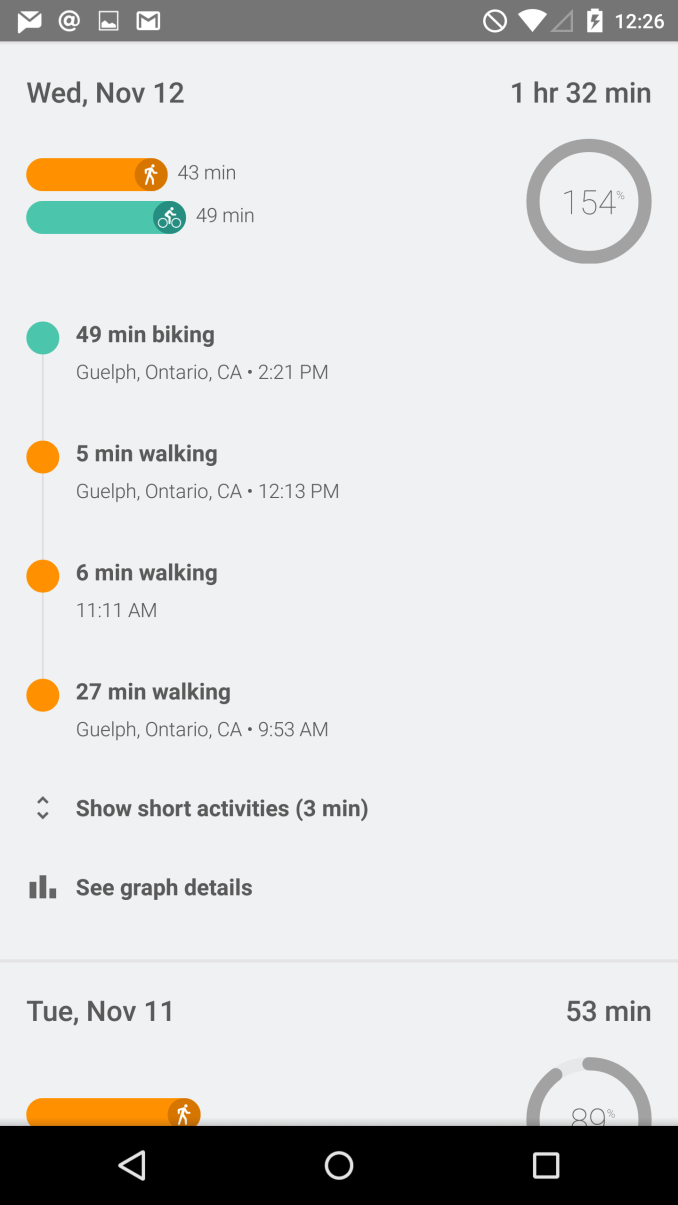
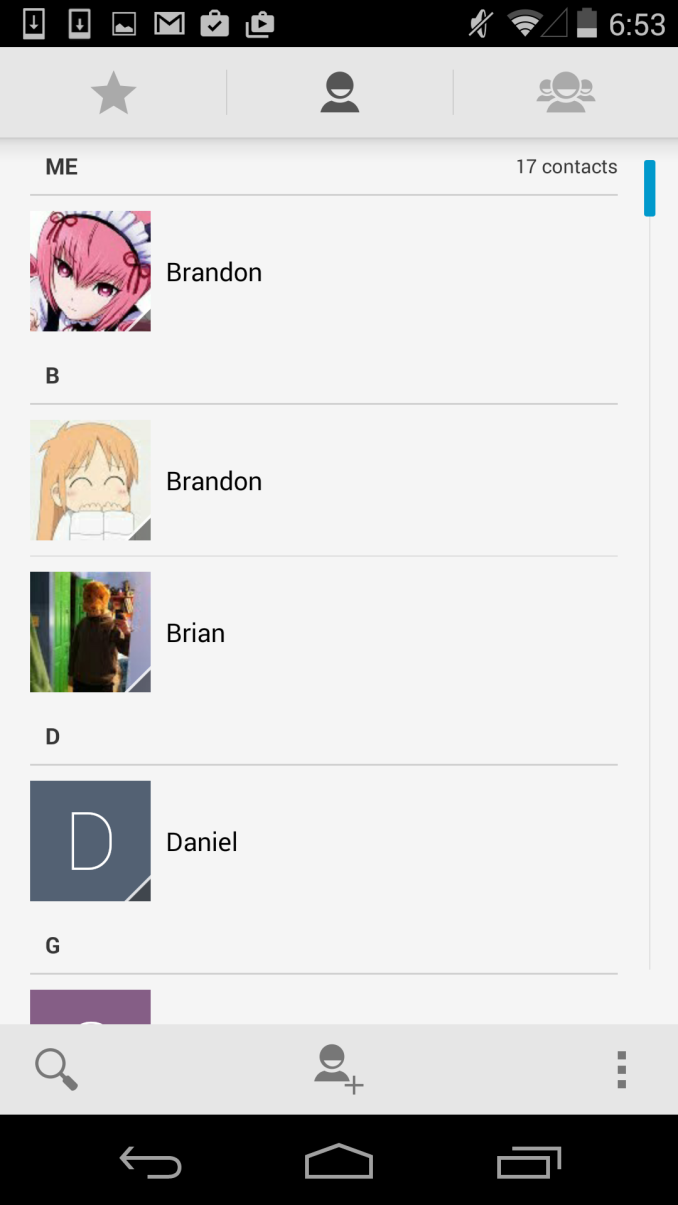
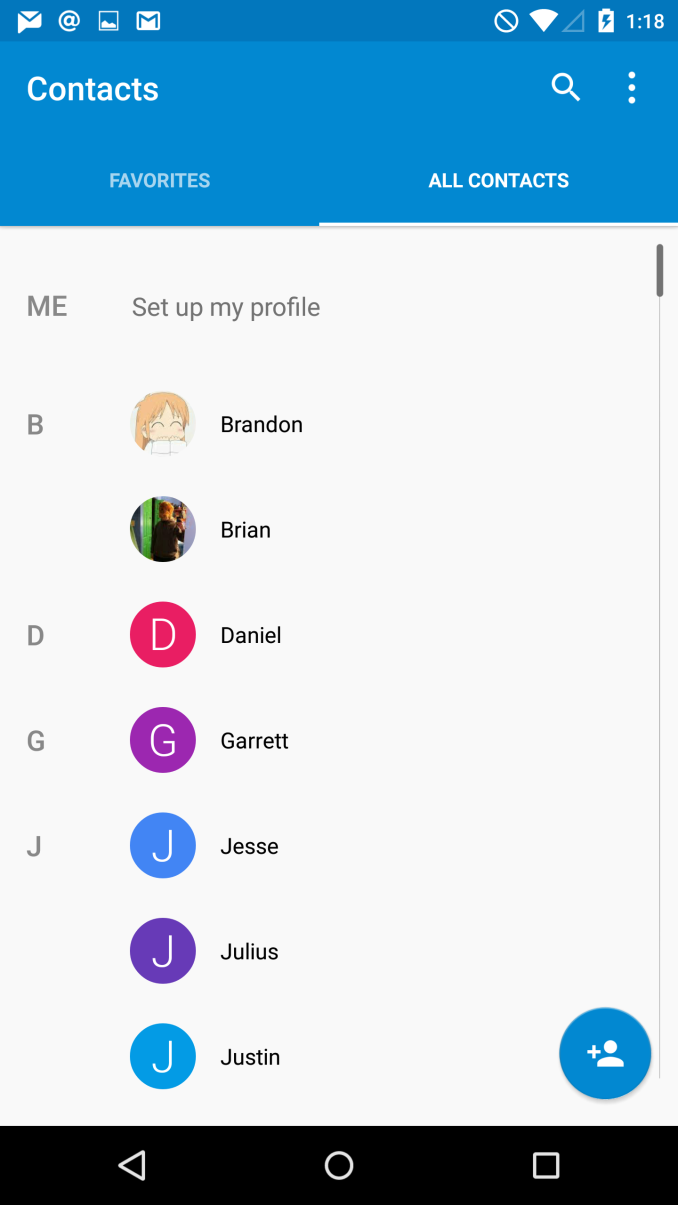
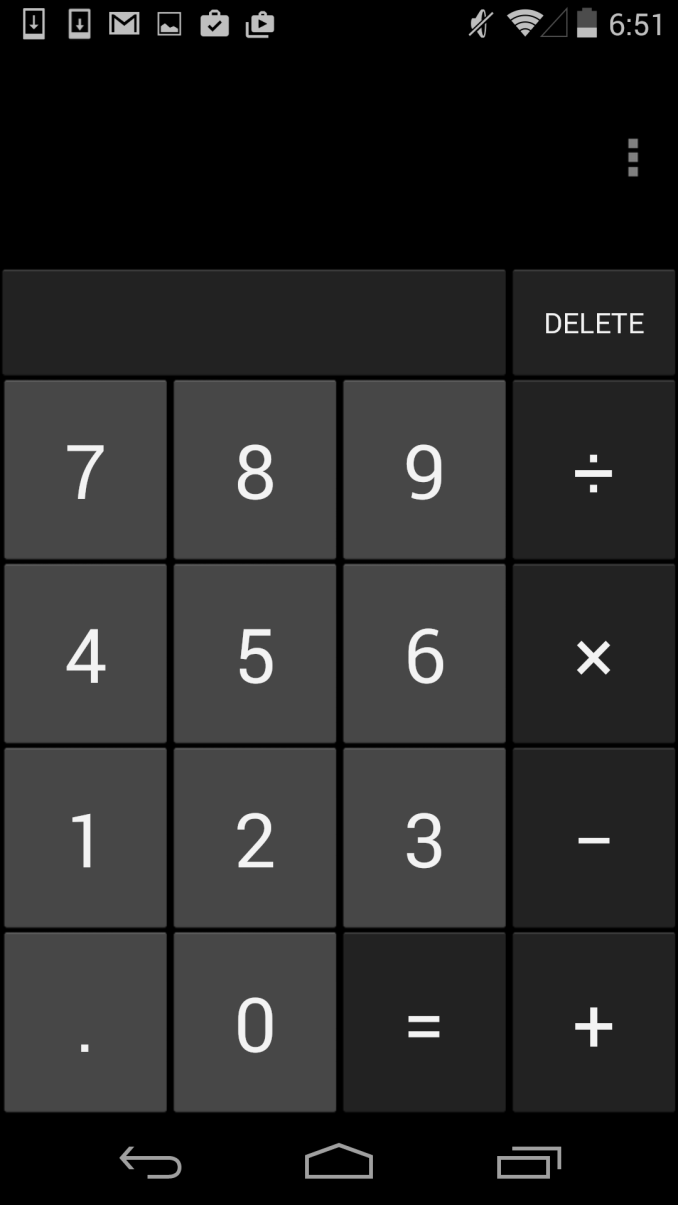
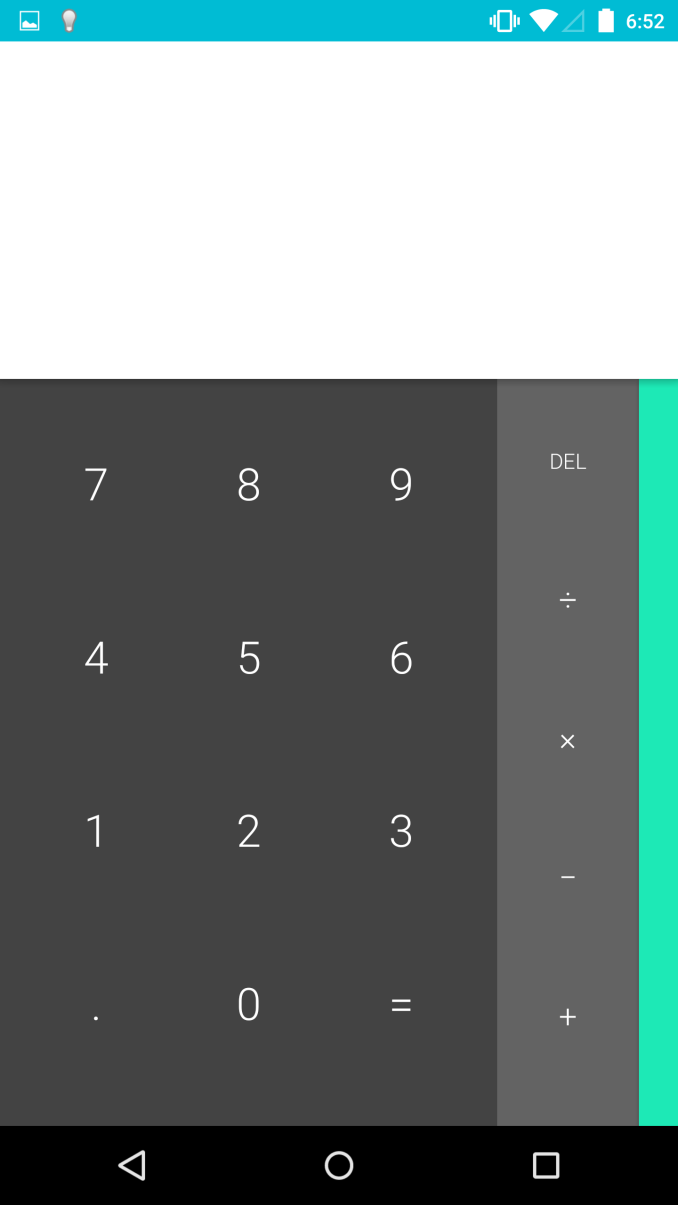
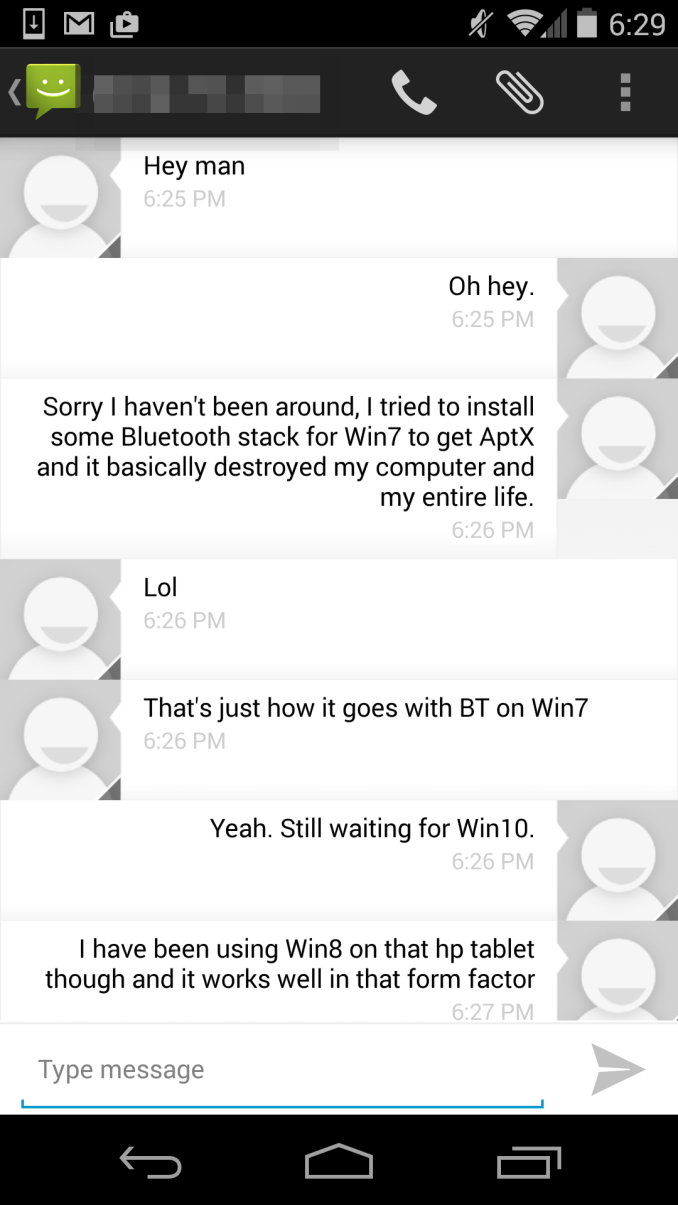
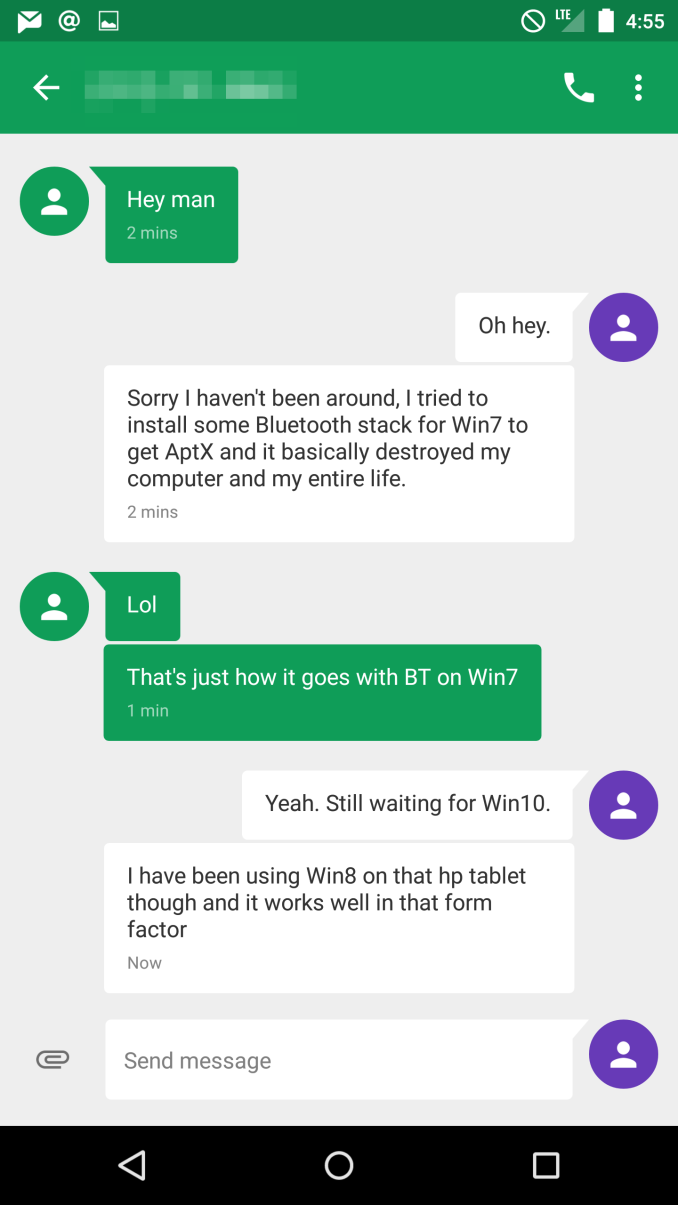









126 Comments
View All Comments
Impulses - Tuesday, December 2, 2014 - link
I actually prefer dragging twice to the top right button, but that's probably because I use my phone primarily with my left hand. Always thought the quick settings button was much too close to the clear all button tho, despite only hitting clear all by mistake once or twice over the last year or so. I do agree some of the other card stacking and UI choices are questionable tho.toyotabedzrock - Monday, December 1, 2014 - link
Oh and can Google explain why Chrome crashes when sharing to Google Plus via the mobile browser interface? Or why the plus app shate function causes every other app to crash from memory depletion? Also Google search inexplicably crashes on my Nexus 5.Salty Wagyu - Monday, December 1, 2014 - link
Tapatalk has the worst jank, even ART hasn't helped much in this case.sonicmerlin - Monday, December 1, 2014 - link
This talk in Google's 2014 I/O event is very relevant: https://www.youtube.com/watch?v=3TtVsy98cesThe speaker talks about the issues of Android's render thread priority causing lag, and how google worked to fix it in lollipop. I think it starts about 19:30 in.
My main question though is how browsers are affected. iOS and WP browsers scroll every webpage with pixel perfect smoothness, where Android has always lagged and stuttered on heavier web pages. Does Lollipop fix this, or will developers have to code their browsers to take advantage of Lollipop?
lukechip - Monday, December 1, 2014 - link
Lollipop is OK, but I preferred KitKat on my Nexus 10. On Lollipop is seems to take longer / more steps to do the same things compared with KitKat. For example, switching users used to involve:1/ swipe down settings
2/ click on my avatar
3/ enter my PIN
Now it invovles:
1/ swipe down notification tray
2/ click on user icon
3/ select my avatar
4/ drag up lock icon
5/ enter my PIN
The added steps add zero value to my experience. It's just plain poor.
Egg - Monday, December 1, 2014 - link
Frankly, I've been disappointed with Lollipop on my Nexus 5. First thing I noticed was highly visible frame drops swiping between Google Now and the home screen. Dashclock no longer functions. I need to swipe twice to get to the quick shortcuts... why? Meanwhile I haven't seen any improvement in the camera, which is slow to focus even in well lit scenarios... wasn't Camera2 supposed to fix this?Egg - Monday, December 1, 2014 - link
Just tested with GPU profiling, I can routinely get spikes to appear. Yikes!(Also, Google Now's undo toast is not full caps like the updated Photos app undo toast.)
tuxRoller - Monday, December 1, 2014 - link
I really, really wish art had delivered what was promised, but for my sample of three nexus devices (n4,n5,n7-2013) it has unambiguously made things worse. All of these devices were installed using the factory image, and two were fully wiped. It's just awful. Load times are longer. The interface is more janky than its ever been. Battery is pretty much unchanged, however.Google would've really benefited from an additional developer release so as to avoid these issues.
Lavkesh - Tuesday, December 2, 2014 - link
I have infact experienced a drop in battery life. I used to have a screen on time of little over 3 hours on Kit Kat but I havent been able to touch 3 hours so far with Lollipop.Lavkesh - Monday, December 1, 2014 - link
There are still a few areas where the animations do not even do close to 30 fps, let alone 60. The new message application is one example when you tap a conversation and it opens up. That said I do not know why the animations on my iPhone 4s feel smoother. Are they rendering it higher than 60 fps or is it physics?